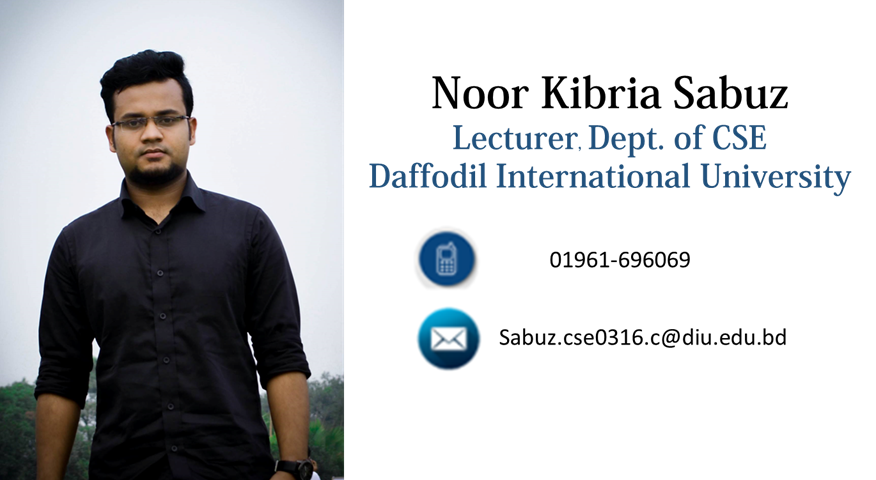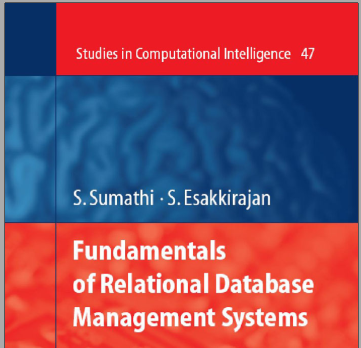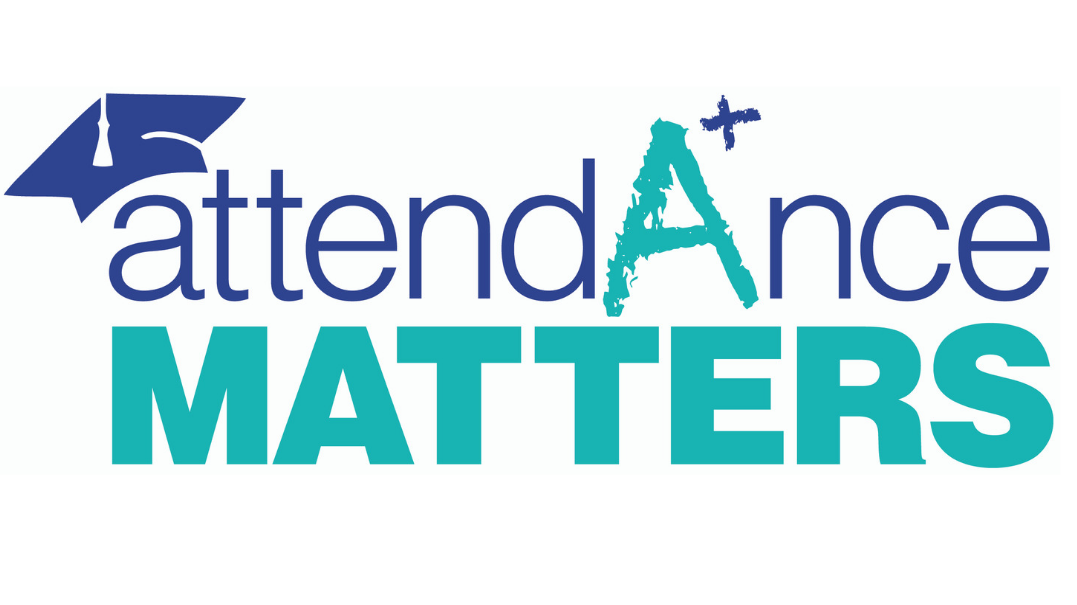Section outline
-
-
Welcome Letter
Dear Students,
Welcome to the 2020 Fall Semester!
Welcome back, Students. I can’t wait to see all your smiling faces ! I am here to support you every step of the way.
I encourage you to make the most of your time here.
Remember to make it a great year. I will see you soon.
Noor Kibria Sabuz
Lecturer, Dept. of CSE
Daffodil International University
Email: kibria4329@diu.edu.bd
Phone: +8801961696069
Course Summary and Objectives

Instructor Information: Noor Kibria Sabuz

Course Rationale:
Database Management Systems (DBMS) are vital components of modern information systems. Database applications are pervasive and range in size from small in-memory databases to terra bytes or even larger in various applications domains. The course focuses on the fundamentals of knowledge-base and relational database management systems, and the current developments in database theory and their practice.Course Objective:
Upon successful completion of this course, students should be able to:
- Describe the fundamental elements of relational database management systems.
- Explain the basic concepts of relational data model, entity-relationship model, relational database design, relational algebra and SQL.
- Design ER-models to represent simple database application scenarios
- Convert the ER-model to relational tables, populate relational database and formulate SQL queries on data.
- Improve the database design by normalization.
- Familiar with basic database storage structures and access techniques.
Course Outcomes (CO’s):
- CO1: To be able to apply analytical skills to map out the conceptual design for a real-life problems and write database documentation, including data standards, procedures and definitions for the data dictionary.
- CO2:To be able to draw the model of Relational Database using Entity Relationship (ER) model and explain the fundamental elements of Database management System.
- CO3:To be able to evaluate the logical design to translate into a specific data model and physical design to meet system storage requirements.
- CO4: To be able to evaluate MSSQL/MySQL/Oracle features and MSSQL /MySQL/Oracle related products for maintaining the integrity and performance of enterprise databases.
-
Set your Appointment Here:
-
Important Dates
-
Introduction Video of DBMS Course
-
Student Interest Survey: Click Here
-
-

-
Lecture -4
-
Lecture -5 : Database Architecture
-

-

-
Video Tutorial on Update Operation
-
-
Mid Term Exam Guideline for students. Click here to see the guideline.
-
You have to answer all the questions.
Upload pdf format answer script and the file size must be within 10MB.
Total Time: 4 hours.File Name Pattern: e.g. CSE311-O2-111-15-1111-mid.pdf
N. B. If you are unable to submit the answer script in BLC, you can submit it in the following Google Form.
-
-

Lecture Objectives:
- Stored Procedure
- First Normal Form
- Second Normal Form
- Third Normal Form
Expected Outcome:
- Able to learn to minimize redundancy (duplicate data) and to ensure only related data is stored in each table.
-

Lecture Objectives:
- Transaction Operation in DBMS
Expected outcome
- Able to learn the basic SQL query with Set operations and different operations in SQL.
Expected outcome
- Able to identify Concurrent execution of the same transaction, deadlock, or slow performance.
-

-
To upload your presentation Click Here
-
-
Final Examination Syllabus
- SQL Queries and Sub-Queries
- Stored Procedure
- Database Normalization
- Database Transaction
- Database Trigger
- ER Diagram
Final Examination Assessment Plan
Total Marks: 40My dear Students,
We are working and learning together. We have shared lot of things in the entire course. Every moment, every day has been filled with boundless joy. As much as I enjoy teaching know that I have enjoyed you more; your laughter, your ideas, your personality, your uniqueness. So, Don't forget to share your experiences with me.
Your timely response will be highly appreciated!!!
- SQL Queries and Sub-Queries













